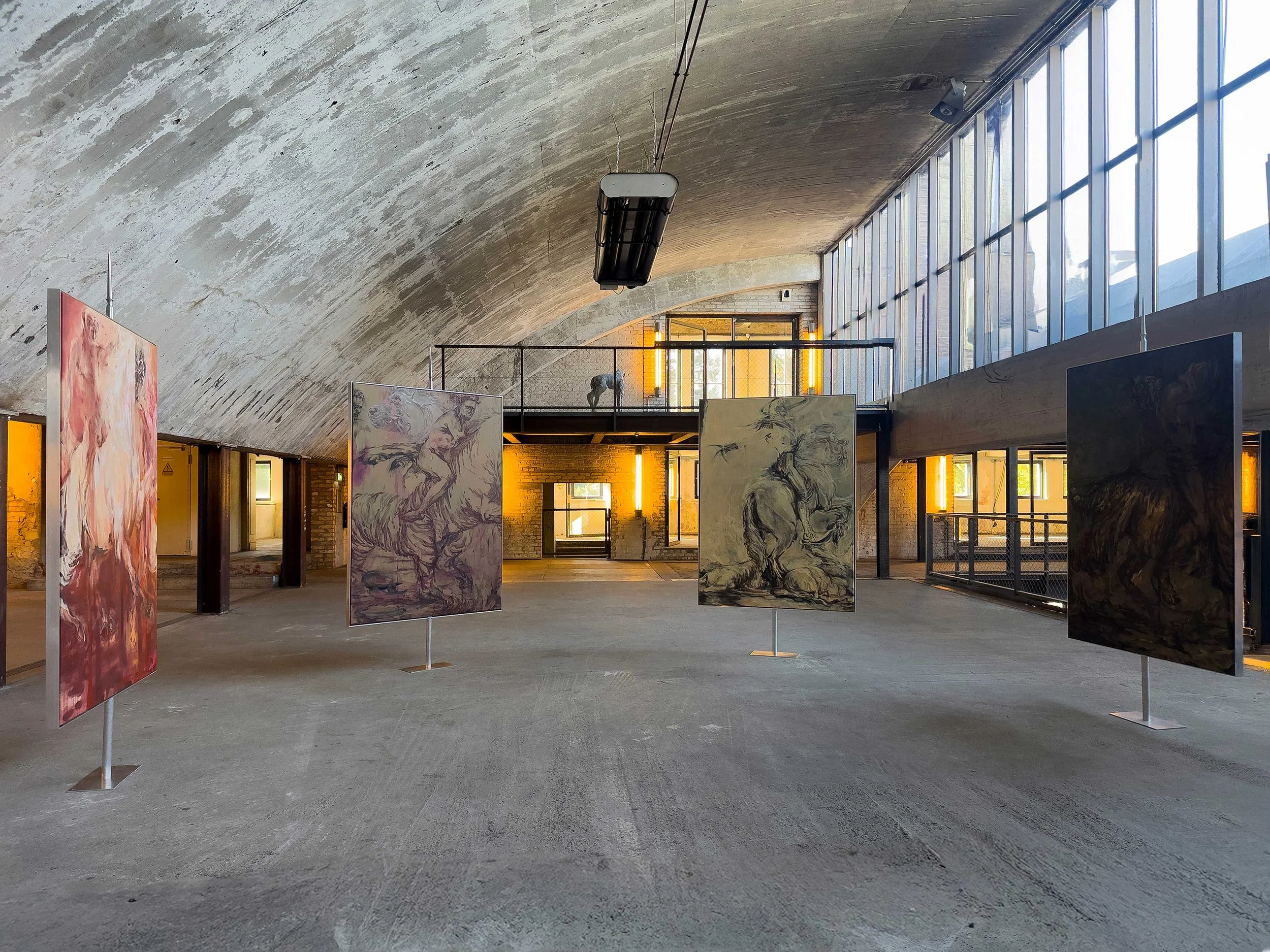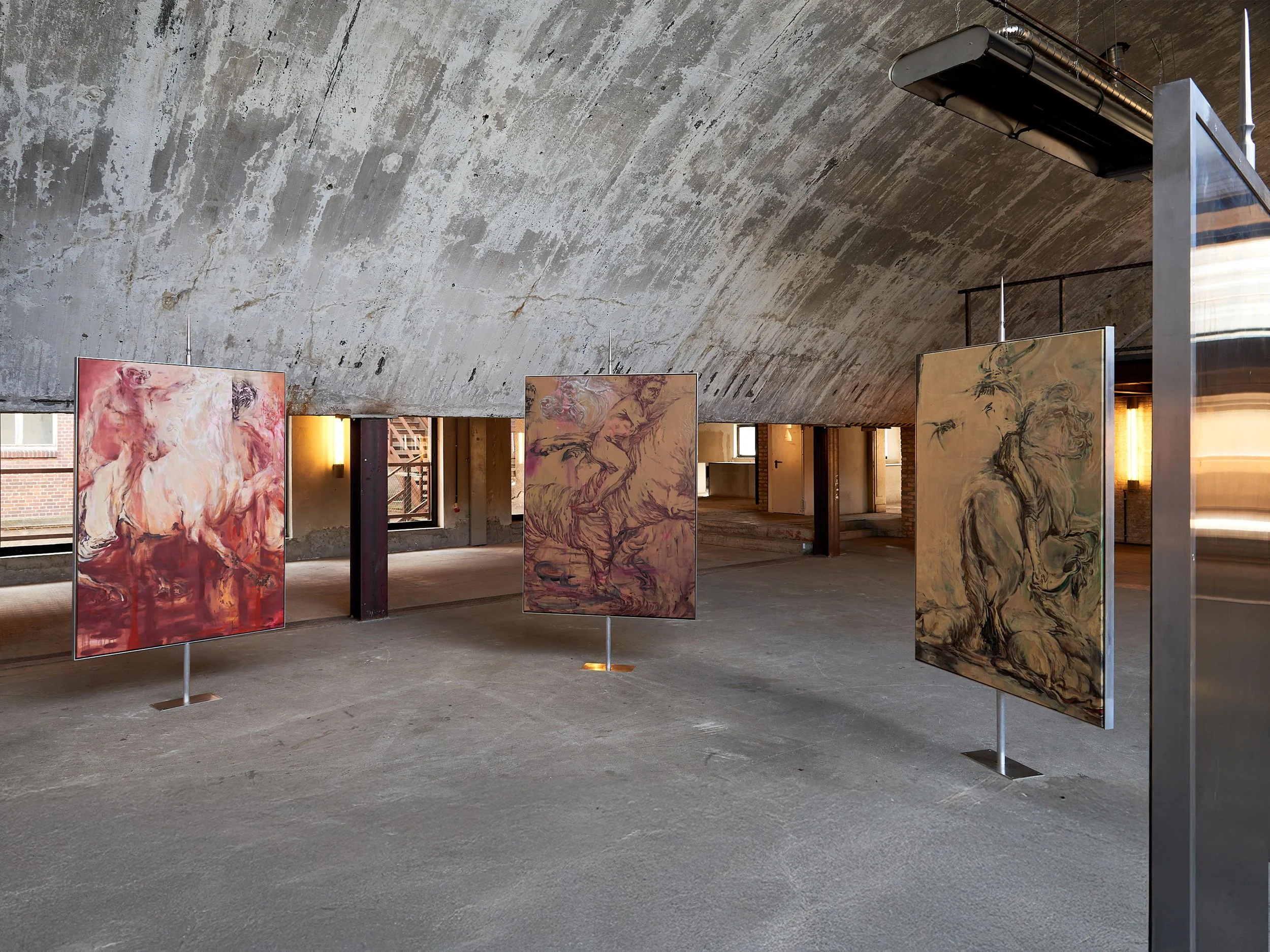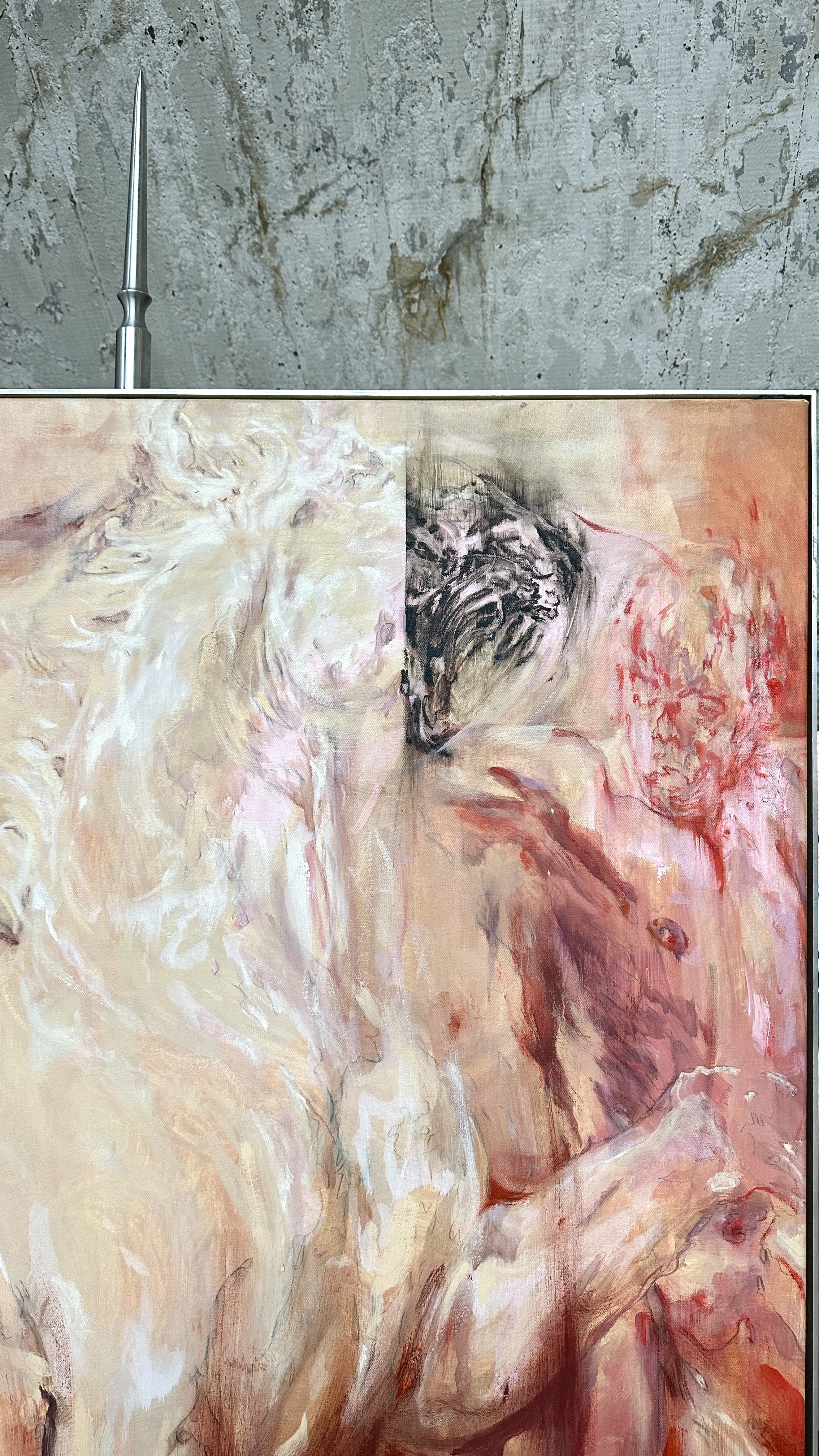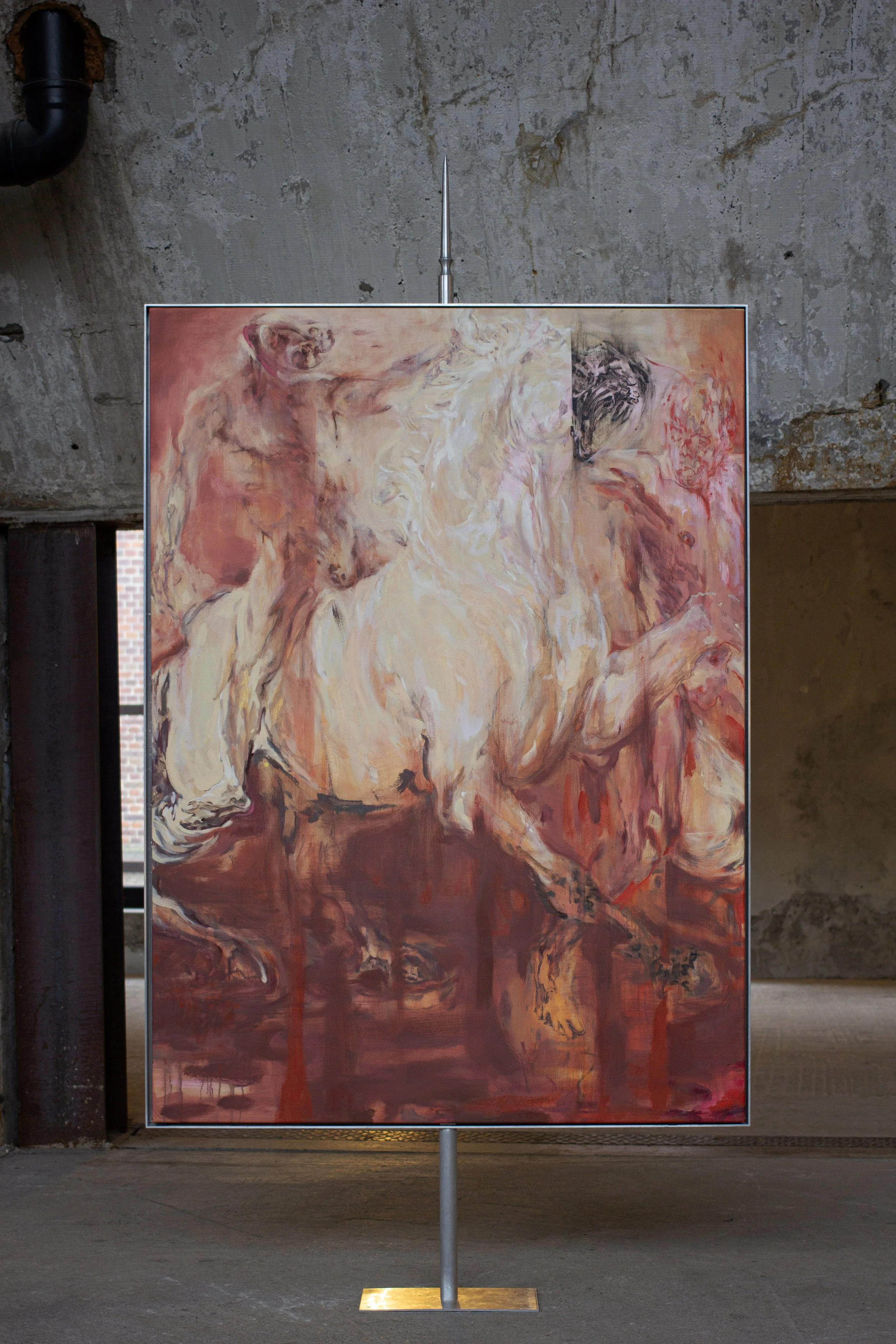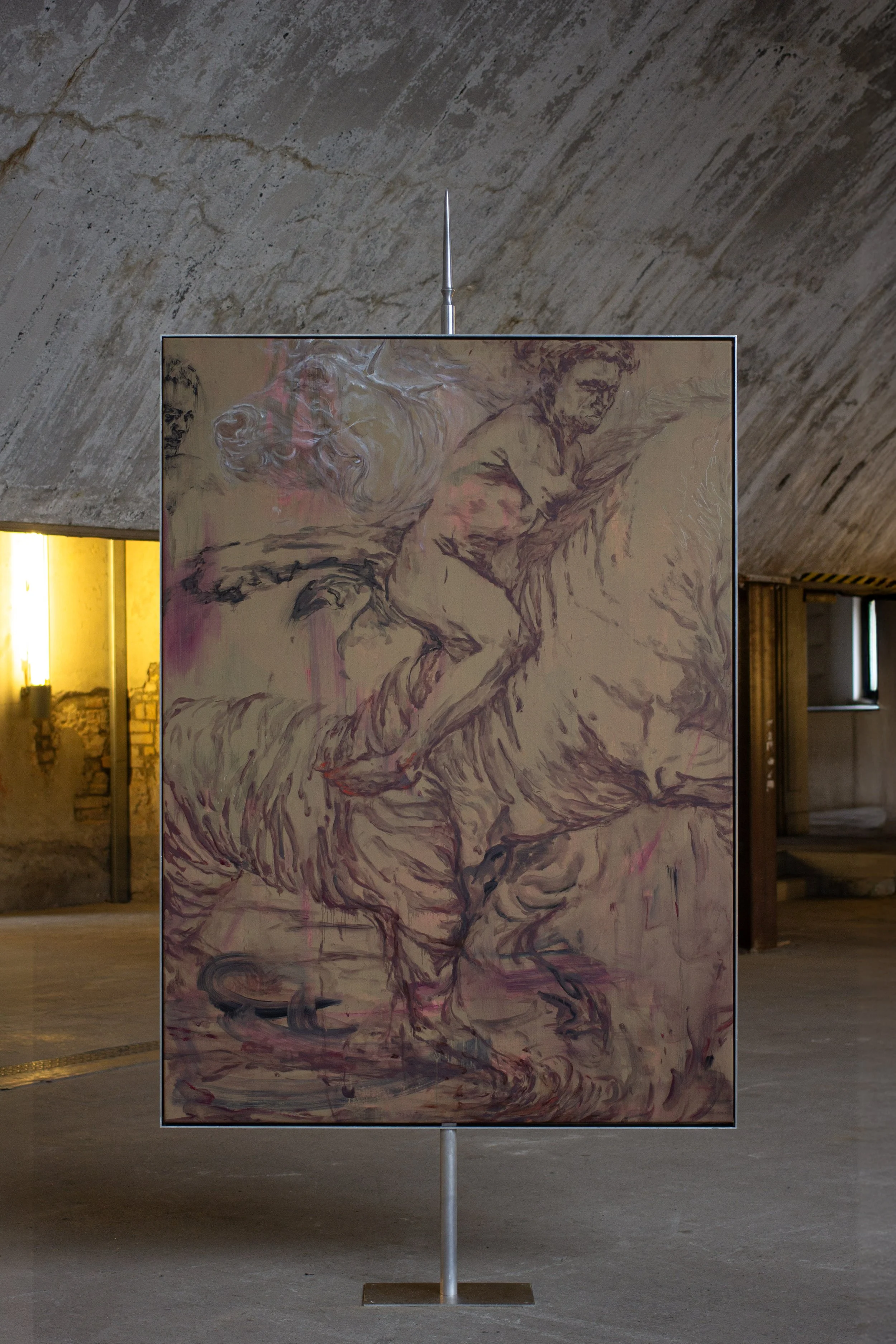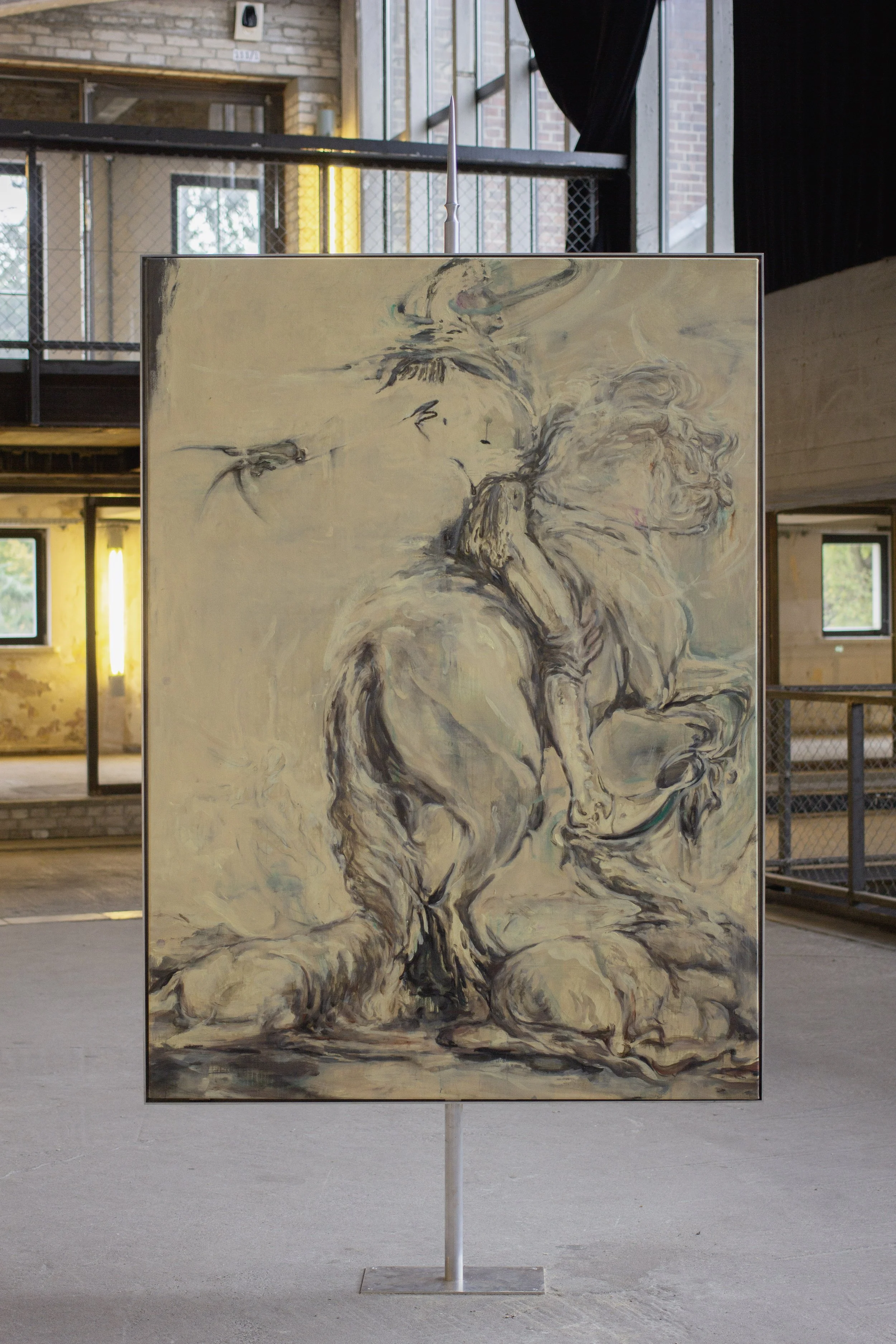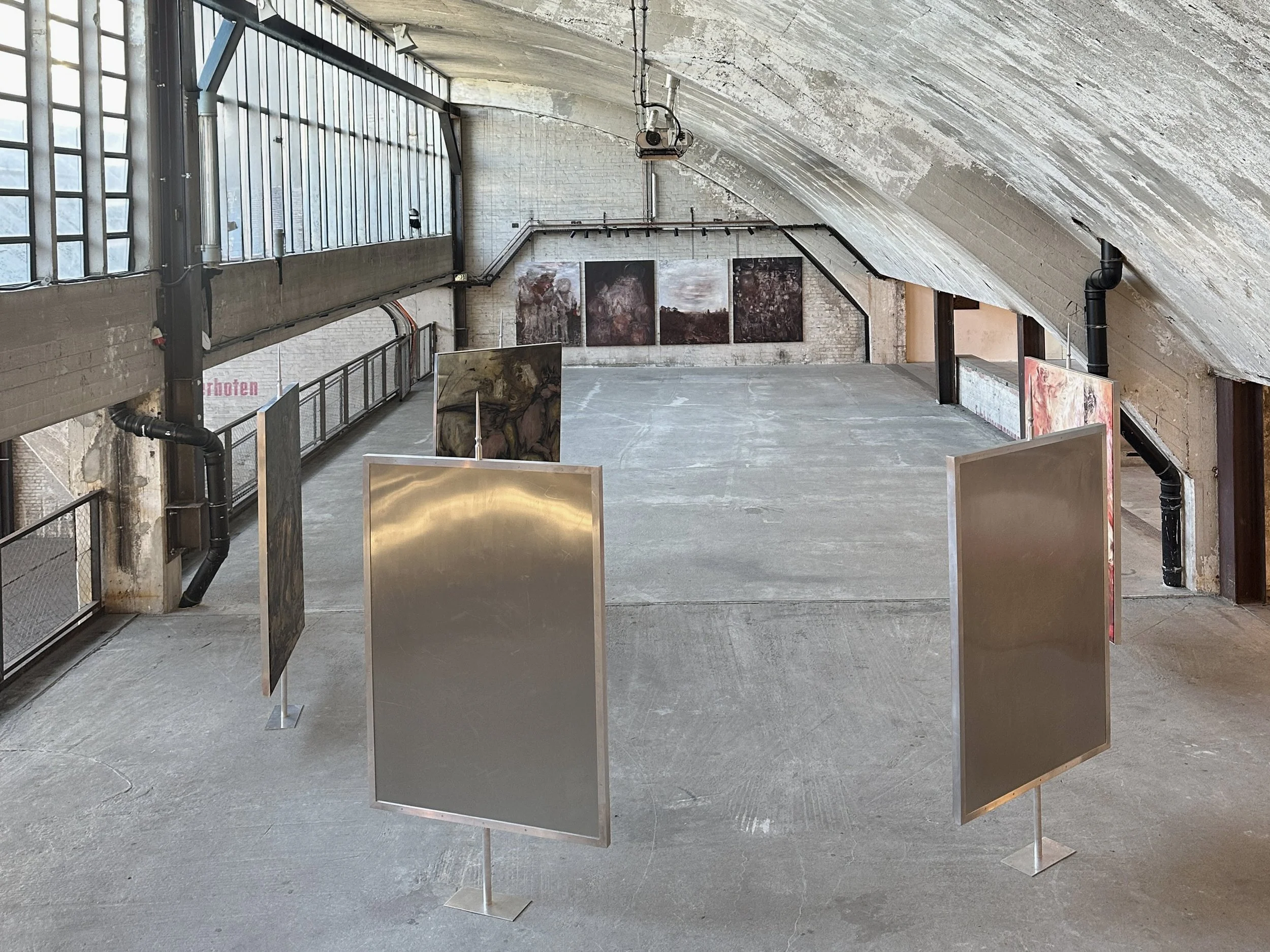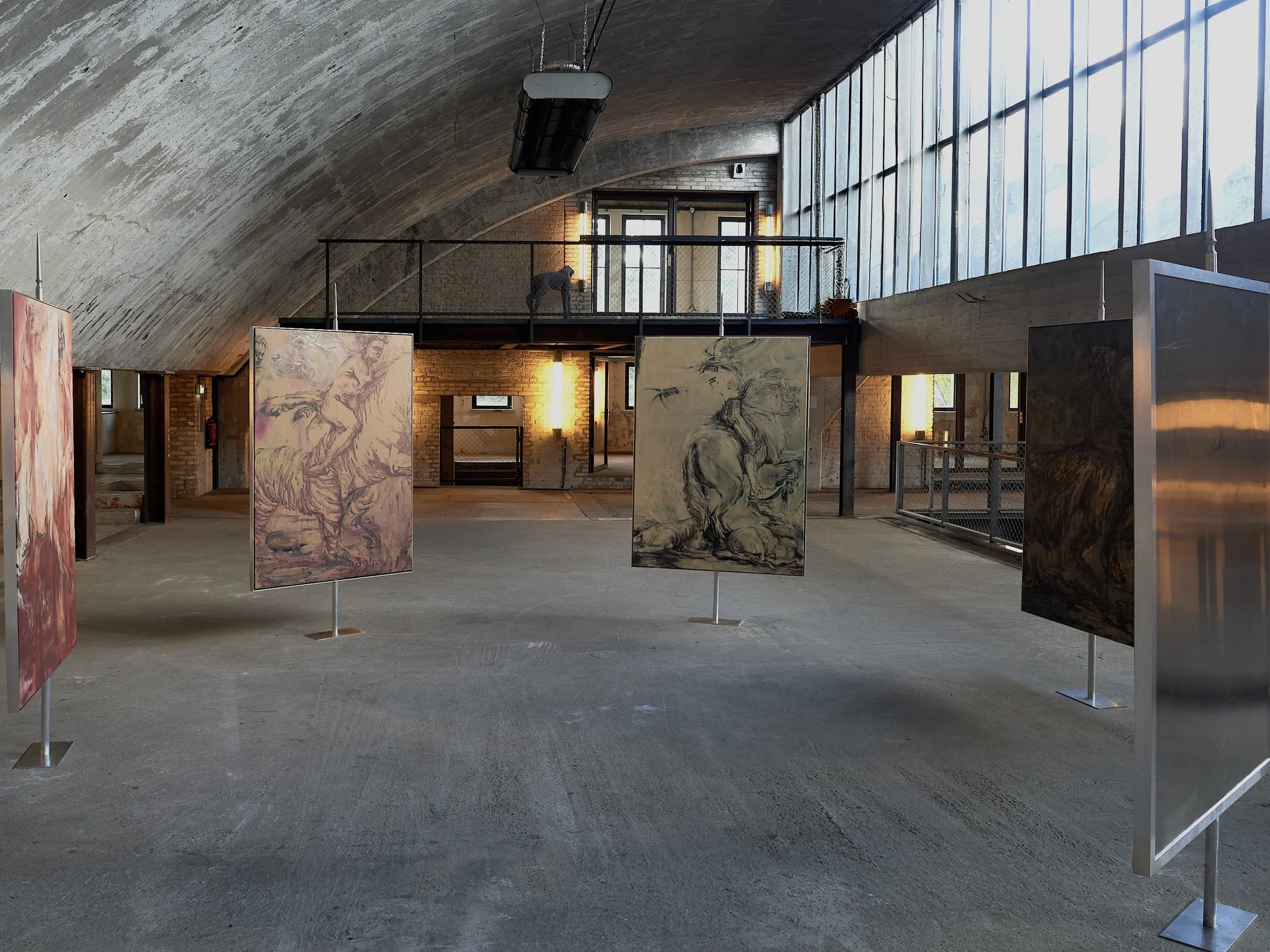
Installation Work part of POLYPHONIC VIEWS for Berlin Art Week 2025- Berlin-DE
Curated by Passage Art
Between power and play, ritual and repetition, Irving Ramó unfolds as an allegorical installation. Here, the carousel becomes a metaphor for an endless loop, where discipline and recurrence coexist with fragments of heroism and parody. Hybrid figures, fused from animal, human, and myth, destabilise familiar hierarchies and reveal how desire is entangled with acts of domination. The narrative remains unfinished, suspended in constant displacement rather than resolving into closure.
The installation itself comprises five canvases (185 × 135 cm), each set in aluminium frames, in which the equestrian portrait, long immortalised by masters such as Velázquez, Goya, and Rubens, is re-examined as a vehicle of authority, prestige, and domination. Ramó interprets the carousel, originally conceived as a military training device, as a symbolic stage of transformation: from the heroic equestrian monument to the children’s fairground ride. Rather than naming colonial legacies directly, he addresses them obliquely: symbols of heroism, masculinity, migration, and belonging are dismantled, ironised, and reframed. The classical monument–so deeply tied to the embodiment of masculinity, the victorious man on horseback, conqueror, hero–is here subverted through repetition, variation, and playful displacement. Multiplied in series, the figures lose their singularity and with it their heroic aura; instead of celebrating the hero, Ramó ridicules him: the pose becomes caricature, the macho an ironic figure.
Georges Bataille argues that the body is never merely a vessel of life but a site where violence, sacrifice, and excess converge. His reflections resonate throughout Equestrian Carousel, in which the hunting scenes by Rubens and Raden Saleh appear not as celebrations of triumph but as allegories of domination, where pleasure is inseparable from destruction. Heroic gestures falter in this register, revealing not mastery but the entanglement of desire and violence. Within this frame, the horse and tiger emerge as symbolic bodies: the horse as an apparatus of the warrior, an extension of military power; the tiger as the exoticised Other, perpetually imagined as prey within the European canon. By reconfiguring and morphing these figures, the artist dissolves the heroic archetype and opens a space for the imaginary, the mythical, the impossible. Animals cease to function as trophies of conquest and instead return as mirrors of human projections, reflecting the fantasies and cruelties that sustain the image of the hero.
Beyond its critical engagement with (art) history, the installation emerges within a register of the mythical and fantasical. Figures appear to merge and dissolve throughout Ramó’s brushwork, their outlines blurred into spectral forms. The palette shifts between pale beige and pastels, flashes of red, and deeper tones of blue, black, and grey. This chromatic field imbues the works with a tragic atmosphere, yet not one of despair. Instead, a sense of longing permeates the surfaces, a nostalgia that hovers without closure. In this mode, the paintings evoke a mythological imaginary: a space where the heroic figure falters, not abolished but suspended, caught between memory, fantasy, and a dream. What keeps these figures turning? In Ramó’s carousel, repetition becomes both burden and possibility: the heroic figure is neither abolished nor affirmed but transformed into an unstable assemblage of human and non-human life. What remains is not triumph but a sense of longing, an atmosphere where memory and myth converge.
Text by Livia Klein
